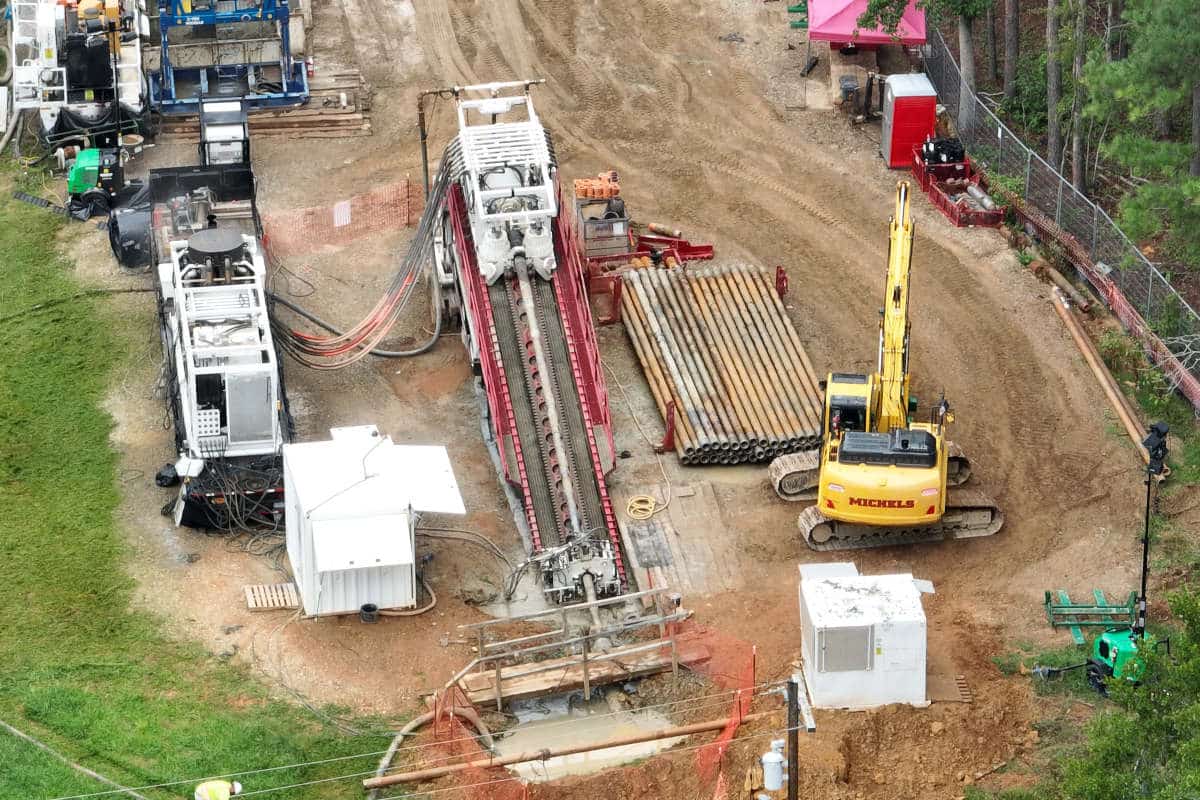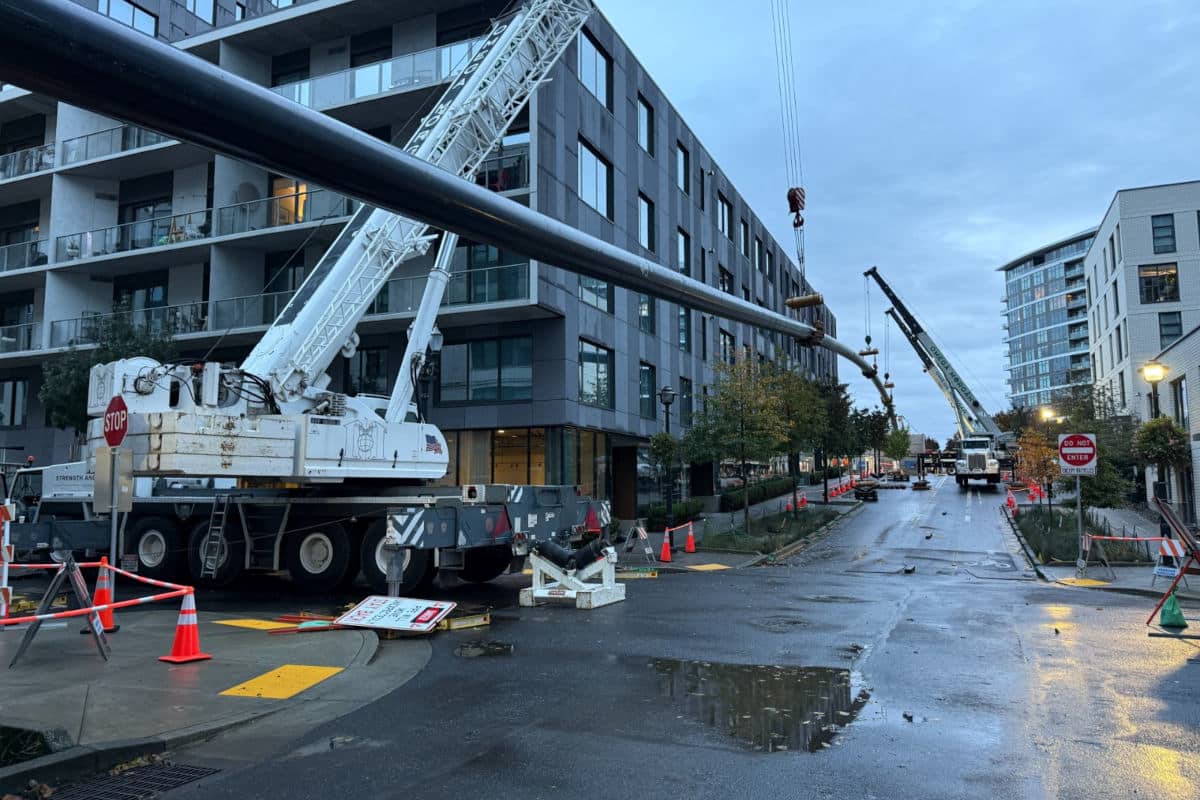Drill Master: You Might Not Be Stuck After All — You Might Be the Latest Victim of Hydrolock!
May 1, 1996
You’re in the middle of a backream operation and everything is going well. You lose flow. Gradually your reverse thrust pressures increase until you run out of pulling power. You release the thrust lever and the product line sucks back into the hole. Each time you try this, the same things happens.Pipe stretch? Maybe. Poly pipe can stretch like that, but what if you’re pulling steel? Steel can do some strange things, but stretching like that is not one of them. Are you stuck? I don’t know, but I sure wouldn’t start digging things up yet.
Drilling Scenarios
Let’s say one of the following happens to you:
(A) You’re stuck and have no choice but to dig up the reamer. Before you start to dig 30 minutes later, you try to move the pipe one last time. It moves. You can move the pipe a certain distance and the same thing happens. By repeating the process you are able to finish the ream. What happened?
(B) Your reverse thrust is increasing. You can still move the pipe but each time you release the reverse thrust, the pipe wants to suck back in the hole. A fracture is created (frac-out) to the ground surface. Your reverse thrust goes down into a normal range and you can continue your reaming operation. What just happened?
(C) You go ahead and dig up the reamer and swivel. You pull your drill rod and product line, both of which pull easily. Why did everything pull so easily when you were stuck?
The answer might be that you weren’t stuck. You might have been the victim of hydrolock.
Hydrolock occurs when you lose flow and create a hydraulic cylinder in front of the reamer and/or compactor and/or product line that can exert more pressure than your rig has thrust. For example, if you take a 10-in. (250 mm) hydraulic cylinder and put 500 psi (34.5 bars) of fluid pressure against it, you’ve created 34,250 pounds (152 kN) of thrust. We create the same situation with a 10-in. (250 mm) reamer that has 500 psi (34.5 bars) of pump pressure if there is no flow. Can you overcome this amount of pressure with a 25,000 pound (111 kN) machine? Not if you believe in the laws of physics.
What causes hydrolock?
You lost flow for some reason. You can’t get into a hydrolock situation if you have flow. If you have flow through the annular space (the space between the product line and the formation or the space between the drill rod and the formation), there is a pressure relief pathway. This pathway serves the same purpose as a bypass valve on a pump. If it builds excessive pressure, the pump will stall out. Similarly, in a borehole, you stall out (run out of rig) or blow up (fracture to the surface).
What causes us to lose flow?
There are several possibilities. The first is that you’re not pumping enough fluid. In this situation, you’re creating a slurry (drilling fluid + spoils) that might be too thick to flow for any distance.
You say you can’t pump any more fluid because your pump is already pumping at maximum capacity? Slow down your backreaming speed. This will allow you to pump the necessary amount of fluid per foot in the hole to keep the slurry flowable. You lose flow simply because your slurry has lost its flowability.
Another possibility is that your backreamer is not doing its job. We think of a backreamer as a cutting tool. However, its secondary responsibility is to mix the drilled spoils into a slurry so it can flow. Some reamers don’t chop up and mix the spoil as much as needed, especially in clay. The clay is cut up into chunks that can either reconstitute behind the reamer into a solid mass or pack off in the annular space. Either way you lose flow. This is why more aggressive wing cutter-type reamers in dense clay get better results, preparing a more flowable slurry.
A compactor can contribute to loss of flow. Compactors work in compactible soils. Please remember!!! Sand does not compact! Some clays don’t compact, especially very dense wet clays. There is no flow path for the slurried spoils to get around many of the compactors found in the field. Even if there is a flow path, there is no guarantee that it won’t get plugged up or packed off in dense clay. In this case, you might be asking for hydrolock.
How do we prevent hydrolock? Maintain flow.
- Pump up enough fluid to maintain flowability
- Slow down the speed of backreaming.
- Only use compactors in compactible soil.
- Pre-ream to condition the spoils into a slurry if very dense clays are encountered.
- In clay, use an aggressive, chopping type reamer to prevent blockage behind the reamer.
What do we do if we think we’re hydrolocked?
- Don’t turn the pump up–this will only make matters worse. Turn off the pump and wait to see if the pressure will bleed off.
- Make a pressure relief pathway above the reamer with a post hole digger or probe rod. If this fails, dig down to the reamer by shovel or backhoe.
All of this discussion on hydrolock assumes you’re using a good drilling fluid. If you’re not, go ahead and dig it all up. You’re probably just plain everyday stuck!




